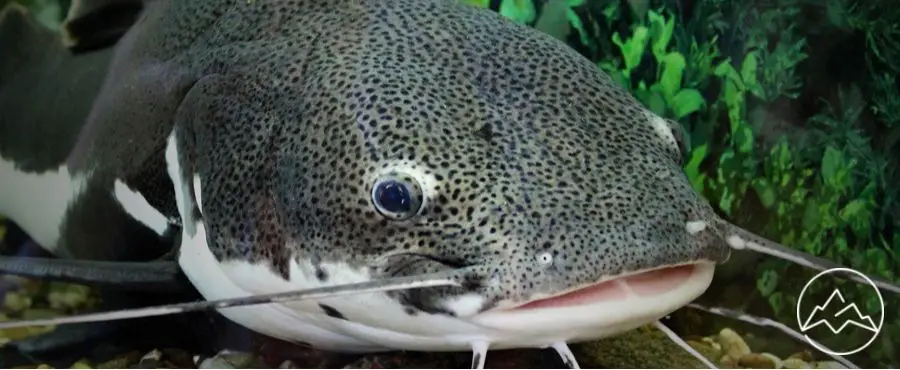If you’re new to catfish fishing, know that this type of angling is both challenging and fun. Catfish put up a good fight, are plentiful, and make for a delicious meal after a long day angling on a river or pond.
If you’re just starting to consider catfish fishing but aren’t quite sure where to start, this guide was written just for you. Keep reading for a detailed look at the three primary types of catfish, plus the definitive guide to how to catch them on your next fishing trip.
The 3 primary types of catfish
The following are the three main species of catfish you will encounter throughout the U.S. These are the most desired species for anglers and are extremely plentiful in reservoirs, lakes, and rivers throughout the country.
Blue catfish
Also known as the ‘high fin blue’, ‘hi-fin blue’, ‘humpback blue’, and ‘Mississippi white catfish’, blue catfish sport a forked tail with white belly shading, a slate blue back, and anywhere from 30 to 35 rays on their back fin.
Blue catfish are not fully mature until they are about 24 inches long, and typically attain weights ranging from 20 to 40 pounds. Some of the larger varieties have been known to weigh over 100 pounds! You’ll find blue catfish mostly in larger rivers, residing in major river impoundments, tributaries, and channels.
Blue catfish have the habit of migrating upstream during the warmer, summer months and downstream when cold weather sets in. The blue catfish’s native habitats are primary rivers throughout the rivers basis of Missouri, Ohio, and Mississippi but they can also be found throughout parts of Texas, Mexico, and the northernmost area of Guatemala.
Blue catfish feast on small fish and water insects when young, but as they mature they begin to feed on mussels, crayfish, and other smaller species. Blue catfish are predatory and typically feed off of newly dead or fresh shad and other fish. These fish grow quickly and live anywhere between 20 to 30 years.
Channel catfish
The second of the primary catfish types is the channel catfish, with a very forked tail and a larger upper jaw that juts out. Channel fish have slate and olive brown coloring, with some varieties featuring grey and blue shades on the sides. Their underbellies are silvery white or white, sometimes with black spots. They have anywhere from 24 to 29 rays on their anal fin.
Channel catfish usually spawn during the later part of spring into early summer once the water reaches temperatures of about 75 degrees. Immature catfish less than 4 inches long typically feed on small insects, but mature ones eat everything from plants to fish to insects to crustaceans.
You will most commonly find large schools of channel catfish in rivers, reservoirs, lakes, and streams with low and moderate current speeds.
Flathead catfish
The last of the primary types of catfish is the flathead catfish, resident throughout a good portion of the U.S. Flathead catfish are known to grow to substantial proportions, with the world record catch weighing around 123 pounds!
Also known as the ‘appaloosa catfish’, ‘shovelhead cat’, ‘yellow cat’, and ‘Opelousas catfish’, among other names, the flathead catfish has a flat head, no scales, and sharp spines on the dorsal fin, mouth whiskers, and serrated spines on the pectoral fins. Mature flathead American catfish can extend up to 3 to 4 feet in length and weigh over 100 pounds.
Flathead catfish usually have light brown to yellow backs and sides, with light yellow or cream undersides. Very young flathead catfish are usually dark brown. These types of catfish have jutting lower jaws and slightly forked tail fins.
Different from blue and channel catfish, flathead catfish only feed on live fish, with the young subsisting on worms, crayfish, and invertebrates, and the mature ones eating almost any kind of species. Flathead catfish spawn from around May to August in waters between 75 and 80 degrees. They typically spawn in undercut trees and hollow logs.
The beginner angler’s definitive guide to fishing for catfish
Here’s what you need to know to make your first catfish catch.
When and where to fish
Catfish are resident in many bodies of water from swift-moving rivers to shallow ponds. For daytime angling, search for catfish types in muddy regions such as tributaries and their outflow. Drop-off basins, river bends, humps, and deep holes are also excellent catfish fishing spots.
If you opt for nighttime angling, this is a prime time to catfish fish. Catfish use their powerful ability to taste and smell to find food at night, so weed-ridden areas, bars, flats, shorelines, and points are all great spots to find catfish.
The gear you’ll need
You won’t need to weigh yourself down with excess gear to go catfish fishing. Here’s the standard gear you’ll need before you set out on your trip:- #2 to #6 treble hooks
- I/0 to 3/0 bait or circle hooks
- 0.5 to 2-ounce egg sinkers
- Bobbers, jig heads, beads, and split shots
- #7 to #10 swivels
- Minnows or worms, artificial bait, or cut-bait
- Lip-grip or net to land your catch
- Long-nosed pliers to disengage hooks
- A rod holder (either shore-style or boat style will do)
- A moderate weight spinning rod 6 to 7 feet in length with a spooled reel featuring 14 pounds or more monofilament. More experienced fishers may prefer using a baitcasting reel.
Catfishing techniques
One of the most widely used catfish fishing tips is to leverage a slip-sinker rig by threading and beading a sinker on your mainline. This works across the various catfish species. You tie the mainline to one side of the swivel and attach the monofilament leader to the other end, along with the hook. You can use the rig on the bottom or drag it over the floor.
Another popular catfishing technique is to use a flat rig by putting a float over the weight on your slip-sinker rig to drag the bait through the catfish habitat slowly. You could also use a jig head with catfish bait on the tip to lure the catfish by lifting and dropping the jig along the floor (live bait works best, here).
FAQs About Catfish & How to Catch Them
What are the different types of catfish that can be caught?
What type of bait is best for catching catfish?
Do certain times of year produce better catches for catfish?
How deep should lines be set to target various species of catfish?
Are certain areas more conducive to successful catches than others when fishing for catfish?
Wrapping up
As a beginner catfish angler, know that catfish may sometimes bite swiftly and hard, while other times they’ll play around with your bait at first. If you’re ever unsure, just set your hook. You could also feed the line if the catfish are nibbling around so they won’t feel the pull. Once the catfish hits the line fully, you can set your hook.



